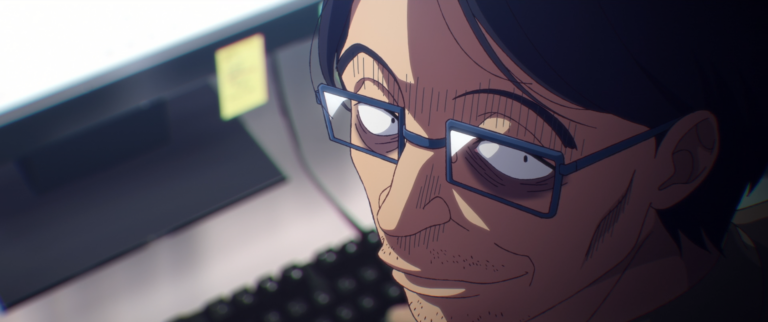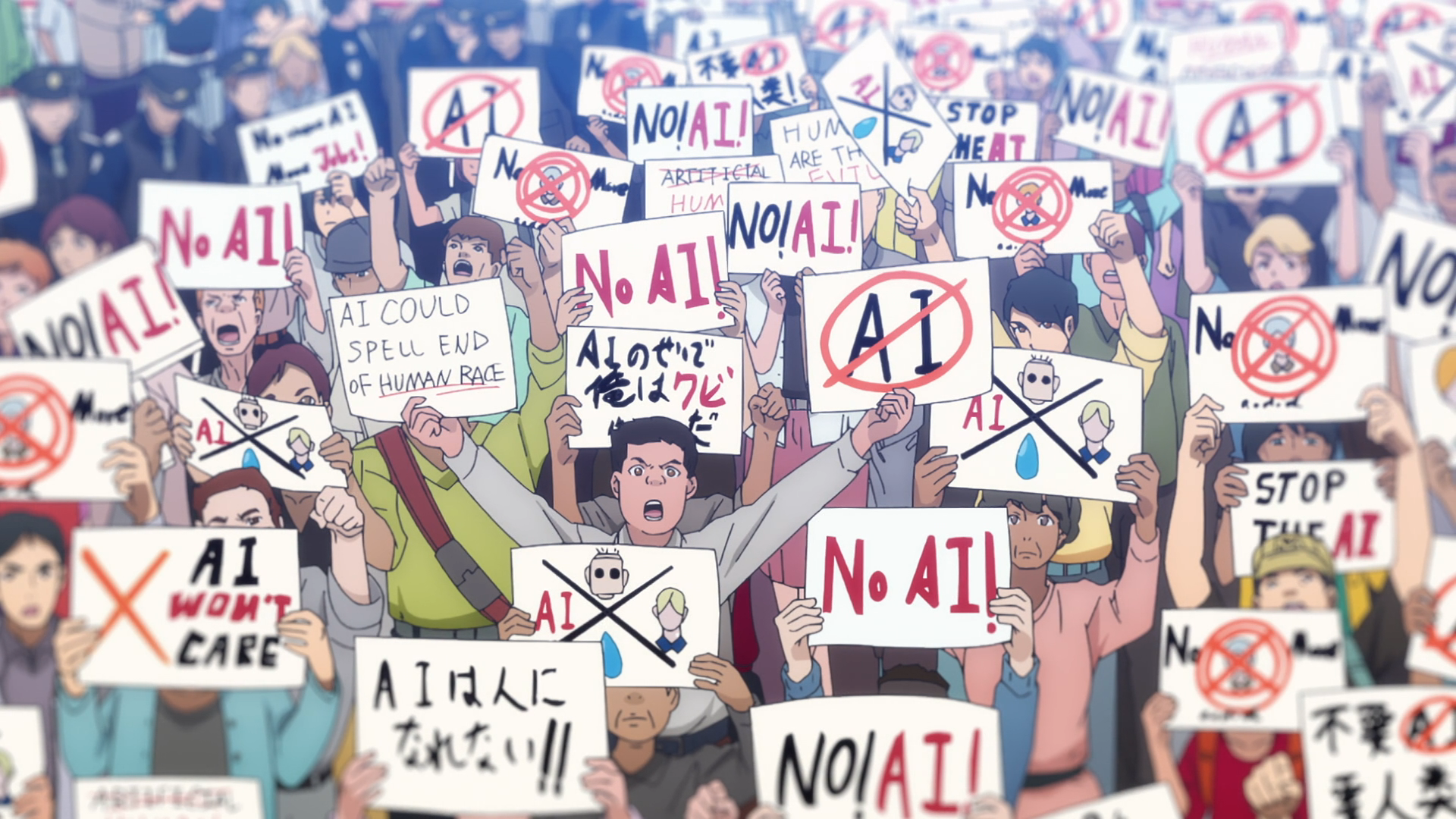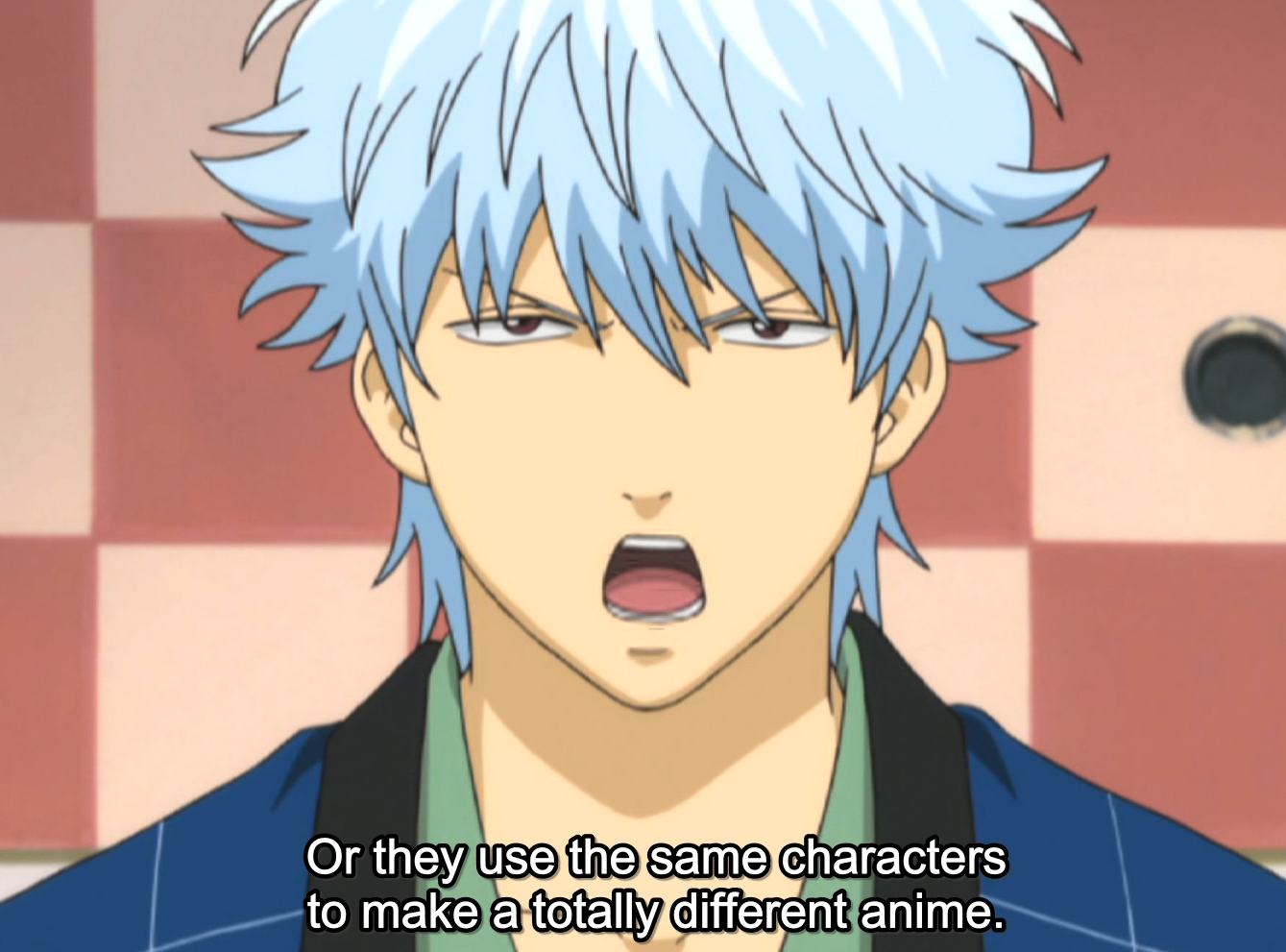Three weeks ago, members of SAG-AFTRA’s national board voted to strike, tens of thousands of actors stopped work alongside already-striking writers, and the public was made aware of contractual horrors beyond comprehension. This is an event that is mostly spoken about in terms of Hollywood, and thus United States, productions but affects media worldwide. The United States has a ridiculous chokehold on entertainment companies and entertainment intellectual property; streaming services and cable television networks are just a couple examples of the way that, even for series not filmed or even conceived of in Hollywood, the people there are connected to it. It is for this reason that the efforts of labor (in the societal sense) are contextually important. This extends to anime too—while Crunchyroll (the platform with the world’s largest anime streaming library) is very established now, it began as a streaming service filled with unlicensed, fan-subtitled (i.e. illegal or pirated) anime. It changed hands between multiple venture capital funded mass media corporations before finally getting gobbled up by Sony Pictures Entertainment, an American subsidiary of the larger Sony Group Corporation and the 7th largest studio (in terms of costs) within the Alliance of Motion Picture and Television Producers (“AMPTP”) that writers and actors are striking against. Sony Music Entertainment Japan, another subsidiary, owns Aniplex and is also involved, adding another layer to the multinational jumble.
This long-winded introduction is to say: corporations may be far apart geographically but money will always keep them as close as possible to everything, even former illegal streaming sites. And money is the core of the issue at hand here; writers’ and actors’ demands are numerous but the bigger ones are broadly in two categories. First, those involved in the creation of shows want access to (stronger) residual payments from streaming services. In the past, those involved in a TV show or movie would get paid every time it was shown again on TV or elsewhere. Streaming services like Netflix generally pay a flat fee rather than residuals or pitifully low residuals if any at all. For English dubs, some companies aren’t renewing the contracts of voice actors who are part of SAG-AFTRA and any demands for improved conditions are non-starters. That aspect is important, but not the one of the two I want to focus on here, mostly because it’s somewhat well known at this point that many involved in creating anime are underpaid, overworked, and treated like cattle. The second category has to to do with artificial intelligence (“AI”). Specifically, in the case of the Hollywood strike, production companies want to pay actors (usually background actors) for just a few days of work in exchange for creating a digital representation of their likeness and placing AI-generated versions of them into shows instead, meaning they’d never be needed again.
The Terrifying Side of AI
This is and should be absolutely frightening. Many people lack full awareness of both the strike and how pervasive ownership of someone’s image can go. This makes sense; AI is incredibly complicated (I work with it daily and still get mystified) and hardly anyone has the domain knowledge necessary to understand exactly how hard a multi-billion dollar corporation is capable of screwing them over. In the anime world, there are obviously not physical actors to the same extent as in many Hollywood productions. However, voice acting and writing are by no means safe from the sort of corporate capture AI offers producers. One instance where this became especially clear to me was actually while browsing TikTok. A popular trend in recent months is leveraging AI models of people’s voices to make them say whatever you want to. People have created entire multipart diss tracks rapped by SpongeBob characters, Dragon Ball characters have had conversations about Vegeta’s weird hairline, and Naruto characters have sung one the anime’s most iconic opening songs, “Blue Bird.”
You can probably see where I’m going with this. The technologies available to make viral content like that are more than available to production companies. There’s little to stop them from replacing all but their main voices with AI. Hell, people have been asking what iconic series will do if their star voice actors ever die for years. AI will definitely be high on the list of possible solutions. Writers are in a similar boat given how bright of an idea it might seem to some CEO to have ChatGPT write a script. And once digital image generative AI improves the same issue will arrive for animators. The little that can stop this lies within stronger labor rights, legal protections, and support from audiences for things like this strike and future ones. Actors, writers, artists, and authors work incredibly hard and put so much passion into their series. They put so much into their craft despite (often) poor conditions or even physical injury from strain. And, even when their series has long ended, authors will still treat fans to art and new content. There’s just that much love that goes into creating and receiving it. All of this is at risk. AI in the hands of those obsessed with profit is an existential threat to millions of careers. Manga AI startups are already raising millions of dollars in funding to completely automate parts of the industry and make some artists redundant in the process. Production companies are beholden to their shareholders; their ultimate concern is maximizing that value. If they can massively cut costs and raise profits they won’t care if the quality sinks—as long as it sells.
You Don’t Want Media Conglomerates Behind Stories
And sadly, it probably will sell. Consumers, especially of anime, don’t actually have that high of standards despite how loud some complaints may seem. Sure, when an episode of One Piece reuses an animation sequence of Sanji kicking someone or Boruto phones in an episode, Twitter (er, X) fans of one show will roast the other for days. But, despite those small bursts of demands for consistent quality, three versions of the same standard overpowered-protagonist isekai do well each season. Anime that care more about panty-shots than plot will still trend. Generic content doesn’t blow anyone’s socks off but it does just well enough to make money. The fact that anime are renewed, cancelled, or picked up based on manga sales volume proves that the industry is more about quarterly profits than quality. This isn’t to say good stuff isn’t profitable, of course it can be, but plenty of high quality anime that don’t breach a certain popularity threshold die in obscurity or sit in the limbo of an abandoned first season.
Even more, on the off chance you don’t care about the people behind your favorite shows making enough money to afford to live (in which case please log off), anime arcs written by not-the-author are often considerably worse than the canon material. There’s a reason that entire websites have been created to track which episodes of an anime are filler and which filler arcs are worth skipping entirely. That’s on top of series like BLEACH going through long, painful stretches of filler amidst various delays. At best, filler right now is written by the same directors and composition writers behind an anime, and can be decent with proper planning. At worst, it’s written under tight deadlines and pretty bad. I don’t know exactly where an AI-generated filler script with AI-adulterated animation would fall, but I’m rather confident it would be more in the category you’d want to skip.
So What?
Right then, this is terrible. And? Honestly, being aware of all of this is, in my opinion, a large part of remedying some of the problems endemic to the entertainment industry. The internet reacts to news of how little animators get paid for hours and hours of work. In the non-anime world, one of the catalysts on social media for attention toward this strike was actors like Kimiko Glenn posting copies of low-paying residual checks and fans rallying behind her. I think that fans, as a sort of collective, being mindful of these types of things and supporting workers if (and when) they speak out goes decently far. On top of that, opting not to consume any future content created in vile ways helps too. If some anime ever fires half their writers and has AI write the script, don’t watch that anime. In an influencer you like shills for a production company trying to screw over actors, flame them online. In all cases, don’t let being entertained make you forget about the human beings behind that entertaining content. Support those who create things you love to watch just as much as you love watching things.
Images via Crunchyroll — Gintama, Vivy -Fluorite Eye’s Song-, Zom 100: Bucket List of the Dead
© Hideaki Sorachi/Shueisha/TV Tokyo/Dentsu/BNP/Aniplex
©Vivy Score / アニプレックス・WIT STUDIO
© Haro Aso, Kotaro Takata, Shogakukan / Zom100 Project



Participate In Discussions